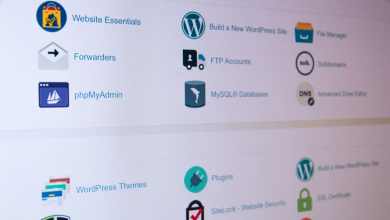Demystifying Cloud Computing: A Comprehensive Guide

In today’s digital age, cloud computing has become synonymous with innovation, agility, and scalability. From individuals storing photos on their smartphones to multinational corporations running mission-critical applications, cloud technology has permeated every aspect of modern life. But what exactly is cloud computing, and how does it work?
In this comprehensive guide, we’ll explore the fundamentals of cloud computing, its various models, deployment methods, and its myriad benefits to individuals and businesses alike. In this transformative arena, https://nordcloud.com/ is a pioneer in providing cutting-edge cloud solutions, empowering organizations to unlock the full potential of cloud technology for their unique needs and aspirations.
Understanding Cloud Computing
Cloud computing refers to delivering computing services—including storage, processing power, and applications—over the internet, rather than relying on local hardware and infrastructure. By leveraging remote servers hosted in data centers around the world, users can access computing resources on-demand, without the need for extensive hardware investments or maintenance.
Key Components of Cloud Computing
Cloud computing encompasses a range of services and deployment models, each serving specific needs and use cases:
-
Infrastructure as a Service (IaaS)
IaaS provides virtualized computing resources over the internet, including virtual machines, storage, and networking capabilities. Users have full control over the operating systems and applications running on these virtualized resources, allowing for maximum flexibility and scalability.
-
Platform as a Service (PaaS)
PaaS offers a platform and development environment for building, deploying, and managing applications without the complexity of infrastructure management. Developers can focus on writing code, while the platform handles provisioning, scaling, and maintenance tasks.
-
Software as a Service (SaaS)
SaaS delivers software applications over the internet on a subscription basis, eliminating the need for users to install, manage, and update software locally. Common examples of SaaS include email services, customer relationship management (CRM) systems, and productivity suites.
Deployment Models
Cloud computing deployments can be categorized into several models, each offering unique advantages in terms of privacy, control, and scalability:
-
Public Cloud
Public clouds are owned and operated by third-party cloud service providers, who offer computing resources and services to the general public over the Internet. Public cloud services are highly scalable and cost-effective, making them ideal for startups, small businesses, and organizations with fluctuating workloads.
-
Private Cloud
Private clouds are dedicated environments operated solely for a single organization, either on-premises or hosted by a third-party provider. Private clouds offer greater control, security, and customization options, making them suitable for industries with stringent regulatory requirements or sensitive data.
-
Hybrid Cloud
Hybrid clouds combine elements of public and private clouds, allowing data and applications to be shared between them. Organizations can leverage the scalability and cost-effectiveness of public clouds for non-sensitive workloads while keeping mission-critical data and applications in a private cloud environment.
Benefits of Cloud Computing
Cloud computing offers numerous benefits for individuals and businesses alike:
-
Scalability
Cloud resources can be scaled up or down on-demand, allowing businesses to accommodate fluctuating workloads and growth without over-provisioning hardware.
-
Cost Efficiency
Cloud computing eliminates the need for upfront hardware investments and reduces operational costs by paying only for the resources used on a pay-as-you-go basis.
-
Flexibility and Accessibility
Cloud services can be accessed from anywhere with an internet connection, enabling remote work, collaboration, and mobility.
-
Reliability and Redundancy
Cloud providers offer robust infrastructure with built-in redundancy and disaster recovery capabilities, ensuring high availability and data protection.
-
Innovation and Time-to-Market
Cloud computing accelerates innovation by providing access to cutting-edge technologies, development tools and services, enabling faster time-to-market for new products and services.
In summary, cloud computing has revolutionized the way we store, access, and utilize computing resources. Cloud technology empowers individuals and businesses to innovate, collaborate, and compete in today’s digital economy by providing on-demand access to scalable, cost-effective computing services over the Internet. Whether you’re a startup looking to scale rapidly or an enterprise seeking to streamline operations, cloud computing offers a wealth of opportunities for growth and efficiency in the modern world.





